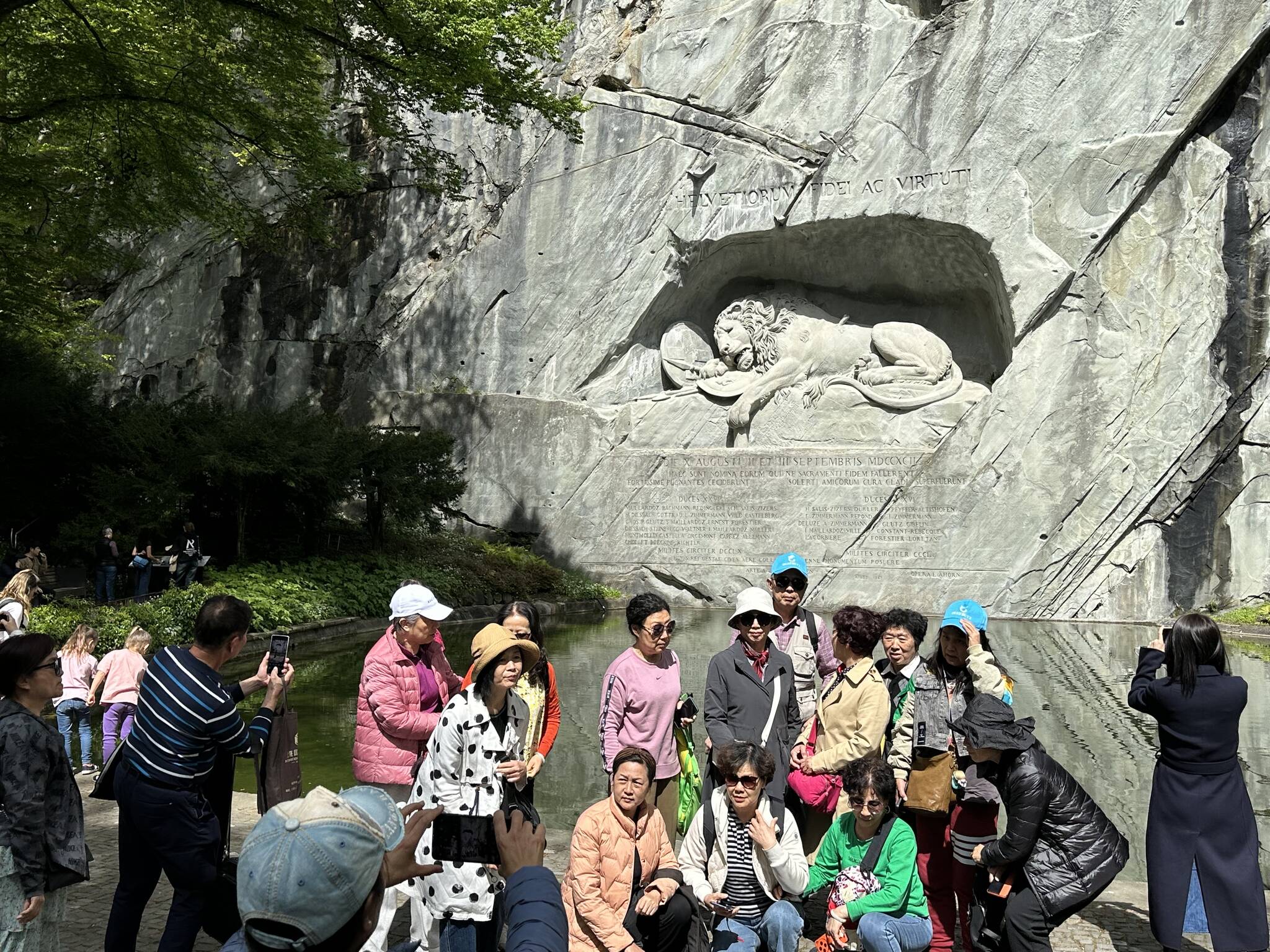For the past three months, I had the privilege of serving as the interim pastor of the International Church of Lucerne Switzerland. Members of that ecumenical English-speaking congregation are from Singapore, Indonesia, South Africa, Brazil, Columbia, Ireland, Slovakia, Hungary, Ukraine, England, France, Italy, Canada, Switzerland as well as the United States. Each Sunday as I stood before the diverse group to give my sermon, there was a sense of universal community.
While in Lucerne, I found myself repeatedly visiting the famous wounded lion monument. This amazing sculpture was carved into a sandstone cliff more than two hundred years ago. It commemorates the seven hundred Swiss Guard who lost their lives attempting to protect the king of France in 1792. The lion, who measures 20 feet high and is 33 feet long, lies with a broken spear in his back and his head bowed. He is obviously dying. Mark Twain called it “the most moving and mournful piece of stone in the world.”
The haunting beauty of this magnificent work of art drew me again and again in the middle of the day to the garden-like setting in the middle of the city. There is no admission fee and it is open to the public. And believe me, the public visits big time.
In addition to taking photos and writing in my journal, I would sit on a bench and simply observe the reactions of busloads of tourists. There was almost a steady stream of “lion hunters” throughout the day. The amazement on faces as they behold the beast for the first time was noteworthy. Visitors with smartphones in hand would take multiple pictures of the lion from various vantage points. They would also take selfies with the sculpture in the background.
I noted tour groups from India, Japan, China, Scandinavia, the United Kingdom and various countries of Europe. The diverse languages spoken reminded me of the nations represented in the church I was serving. Yet, in spite of the diversity, there was a sense of unity. The magnificent sculpture provided common ground. There was harmony and oneness. That carved piece of stone pictured the peace for which we all long.
The day before my wife and I flew home to Seattle, we paid one last visit to the lion. Two college-age guys were helping an elderly man navigate the stairs in front of the monument. I engaged them in conversation. They described the joy they were experiencing helping their ninety-year-old grandfather from Virginia discover his Swiss roots. Like others I’d witnessed over the previous several weeks, they were transfixed by what they saw. Standing with their rather feeble grandfather, they posed with the others around them taking picture after picture. The lion became the great equalizer.
When I mentioned to them that I was from the Seattle area, a female tourist within earshot walked by and said, “I’m from Poulsbo!” To which I responded, “Let’s hear it for Sluys’ Bakery!”
I attempted to follow the ball-capped woman into the crowd. I wanted to chat about her visit to Lucerne and see if perhaps we had mutual friends in Kitsap County. But alas, she disappeared into the mass of people headed for their buses. I wish I’d gotten her name.
Although Wendy and I are now back home, the eyes of the world are focused on where we’ve been. This past weekend at Burgenstock, a mountain-top resort above Lake Lucerne in Central Switzerland, representatives from a multitude of nations gathered in a peace summit.
The purpose of the gathering was to discuss ways to end the bloodshed in Ukraine. Although Russia and China were not participating, delegations from a multitude of nations dialogued determined to find solutions to global conflicts (primarily the war in Ukraine). They looked for common ground on which to build bridges to isolated islands. It is a chance for those of who can only follow developments in the media, to pray for the process taking place.
Time limitations and security precautions likely prevented the participants from visiting the lion monument less than a half-hour away. And that is a shame. A visit to the monument would have allowed global leaders the chance to see what coming together looks like. It would have given those who can make a difference a peek at how nations are united when they gather on common ground.
Guest columnist Greg Asimakoupoulos is a former chaplain at Covenant Living at the Shores in Mercer Island.



